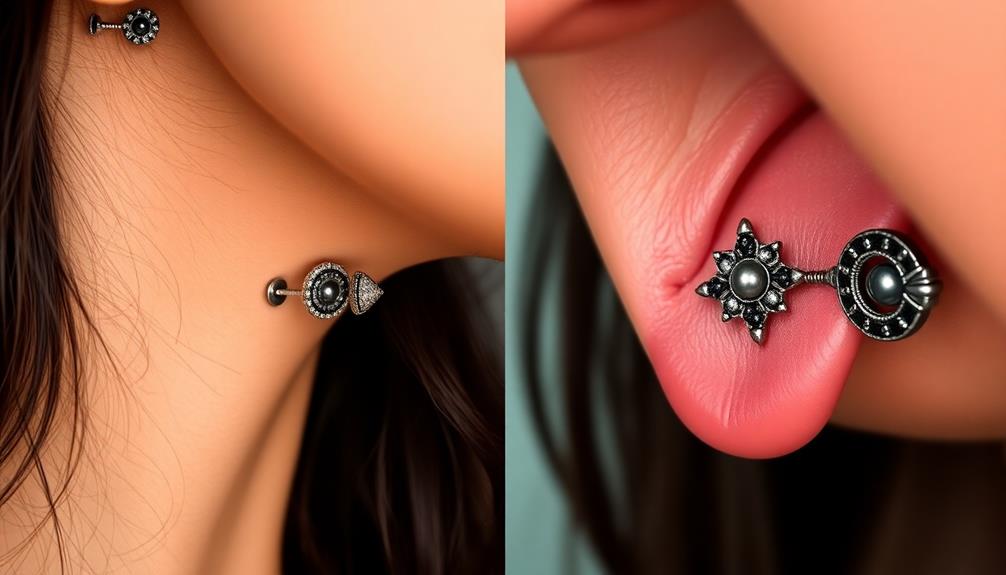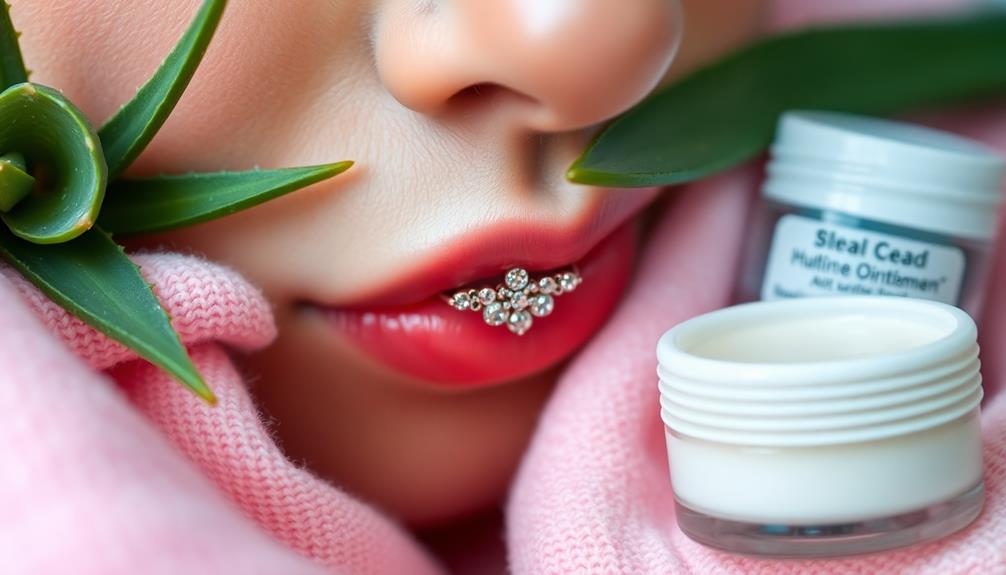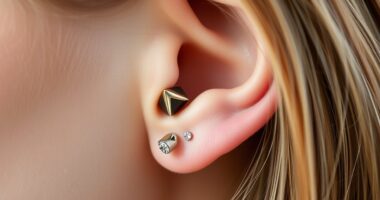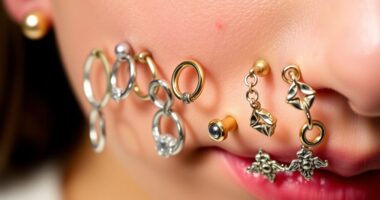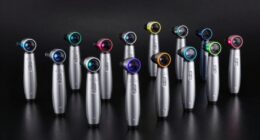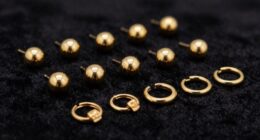When choosing between vertical and horizontal clit hood piercings, it's essential to weigh their pros and cons. Vertical piercings can enhance pleasure with direct stimulation and typically heal faster (4-8 weeks). They also tend to cause minimal movement discomfort. On the other hand, horizontal piercings provide consistent stimulation during intimacy and have a unique aesthetic with various jewelry options. However, they may heal slower (6-8 weeks) and require more careful aftercare. Your anatomy plays a significant role in which is suitable for you. If you're curious about more details, you'll find additional insights ahead.
Key Takeaways
- Vertical Clitoral Hood (VCH) piercings offer direct stimulation to the clitoris, enhancing pleasure during sexual activity.
- Horizontal Clitoral Hood (HCH) piercings provide a unique aesthetic and consistent stimulation during clitoral rubbing or penetration.
- VCH piercings typically heal faster (4-8 weeks) compared to HCH piercings (6-8 weeks), making them a quicker option.
- HCH piercings may experience complications from movement and snagging, while VCH minimizes discomfort due to less movement.
- Jewelry for VCH usually consists of curved barbells, whereas HCH typically features rings or circular barbells for a distinct look.
Overview of Clit Hood Piercings

Getting a clitoral hood piercing can be an exciting way to enhance your body and explore new sensations. There are two main types of clitoral hood piercings: the vertical clitoral hood (VCH) and the horizontal clitoral hood (HCH). The VCH piercing goes through the peak of the clitoral hood, providing direct stimulation to the clitoris, while the HCH is positioned horizontally at the base, offering a different feel.
When considering these piercings, it's vital to think about your personal anatomy, as it affects the suitability and placement of each option. Consulting an experienced piercer can help you make the best choice.
Jewelry choices also vary; VCH typically uses curved barbells to enhance direct contact, while HCH often features rings or circular barbells for movement.
Regarding the healing process, VCH healing time is generally around 4-8 weeks, while HCH healing time can take 6-8 weeks. Individual experiences may vary, so it's important to follow aftercare instructions closely.
Each option has its pros and cons, so understanding these aspects will help you decide which piercing aligns best with your desires.
Pros of Vertical Piercing
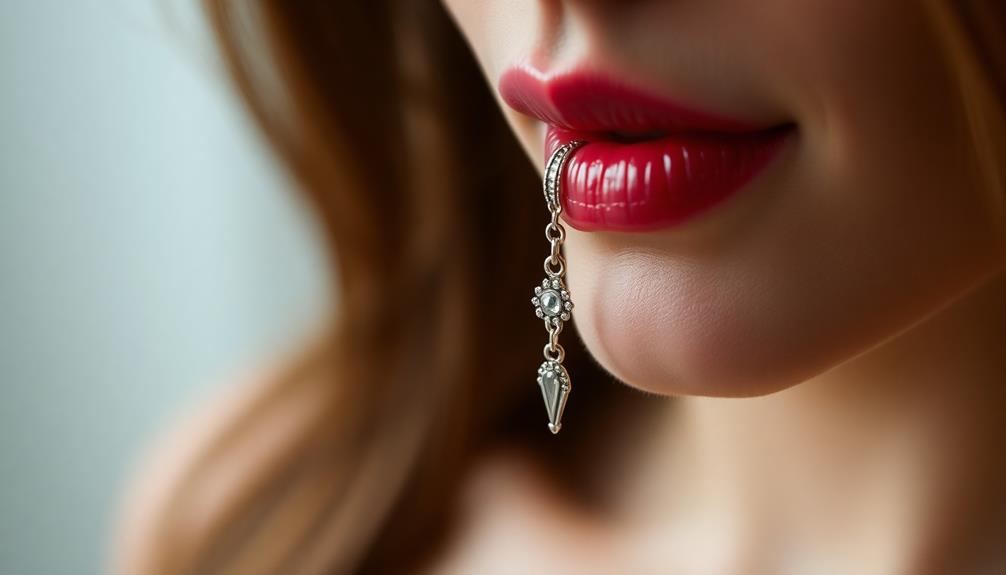
One significant advantage of a vertical clitoral hood piercing (VCH) is its ability to provide direct stimulation to the clitoris during sexual activity, enhancing pleasure for both you and your partner. This stimulation can lead to heightened sensitivity, making the experience more enjoyable and satisfying over time.
Another pro of the VCH is its relatively quick healing period, typically lasting between 4-8 weeks. This means you won't have to wait long before fully enjoying the benefits of your new piercing.
Additionally, due to the placement of the VCH, there's generally less movement during daily activities. This can contribute to a more comfortable healing process, reducing the likelihood of irritation.
The initial jewelry used for a vertical clitoral hood piercing is usually a curved barbell, designed with smooth balls to minimize discomfort during the healing phase.
Choosing a reputable piercer guarantees that the procedure is done safely and correctly, further enhancing your experience. All these factors combine to make the pros of vertical piercing appealing to those seeking enhanced pleasure and comfort in their intimate life.
Pros of Horizontal Piercing
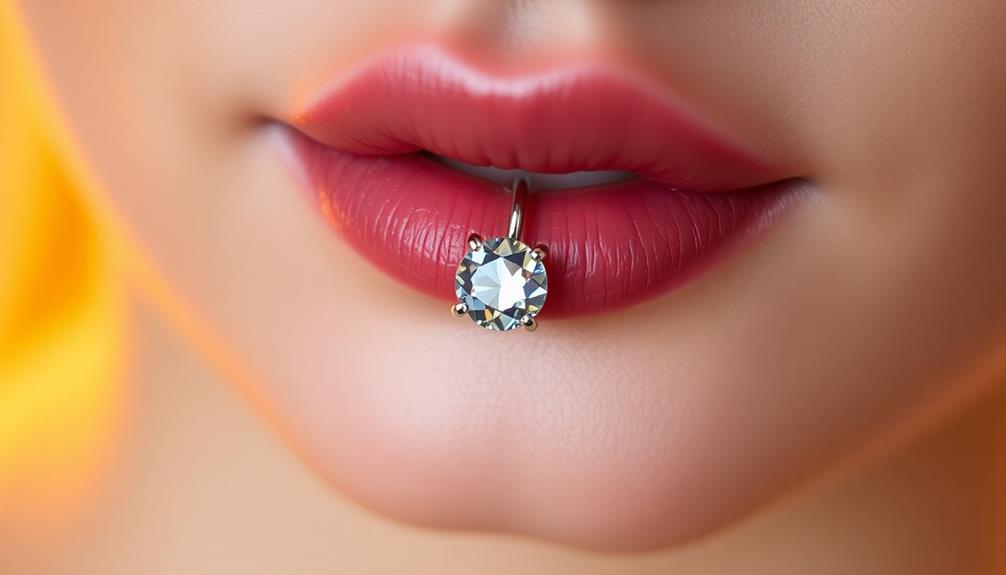
Have you considered how a horizontal clitoral hood piercing (HCH) can enhance your aesthetic appeal? HCH piercings offer a visually distinct look, allowing your jewelry to be prominently displayed.
The placement of HCH piercings also provides consistent stimulation during activities like clitoral rubbing or penetration, making them a popular choice for enhancing sexual pleasure in intimate encounters.
The healing process for HCH piercings is generally straightforward, and most individuals report minimal complications when proper aftercare is implemented. This simplicity can be a relief for those concerned about healing times.
Plus, HCH jewelry options, such as rings or circular barbells, can offer added comfort and reduce the risk of snagging, which is often a concern with straight barbells.
With their unique positioning, many people find that HCH piercings intensify pleasurable sensations, making them a delightful addition to your sexual experiences.
If you enjoy the visual appeal of jewelry and seek increased stimulation, a horizontal clitoral hood piercing could be the perfect choice for you. Embrace the added aesthetic and pleasure these piercings can bring!
Healing and Aftercare Differences
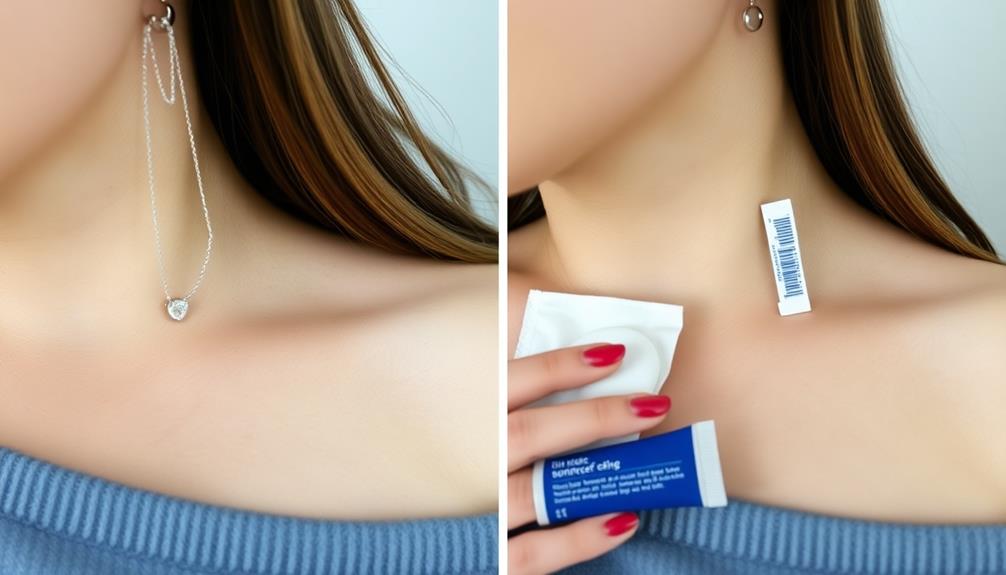
When it comes to healing and aftercare, understanding the differences between vertical clitoral hood piercings (VCH) and horizontal clitoral hood piercings (HCH) is vital.
VCH piercings typically heal faster, usually within 4-8 weeks, whereas HCH piercings may take 6-8 weeks. Since VCH piercings experience minimal movement during healing, aftercare is generally simpler. In contrast, HCH piercings can face complications due to frequent movement and snagging against clothing.
Both types may bleed for 3-5 days post-procedure, so using sanitary napkins during this time is recommended to manage any discharge.
Regular cleaning with sterile saline solution is vital for both, but you'll need to pay extra attention to HCH piercings to avoid irritation.
It's also important to postpone sexual activity until you feel comfortable, and using a latex barrier for at least 6 months is advisable for both VCH and HCH piercings to guarantee proper healing and minimize the risk of complications.
Keep an eye out for signs of infection, such as increased redness or discharge, as timely intervention is key to a successful healing process.
Choosing the Right Piercing
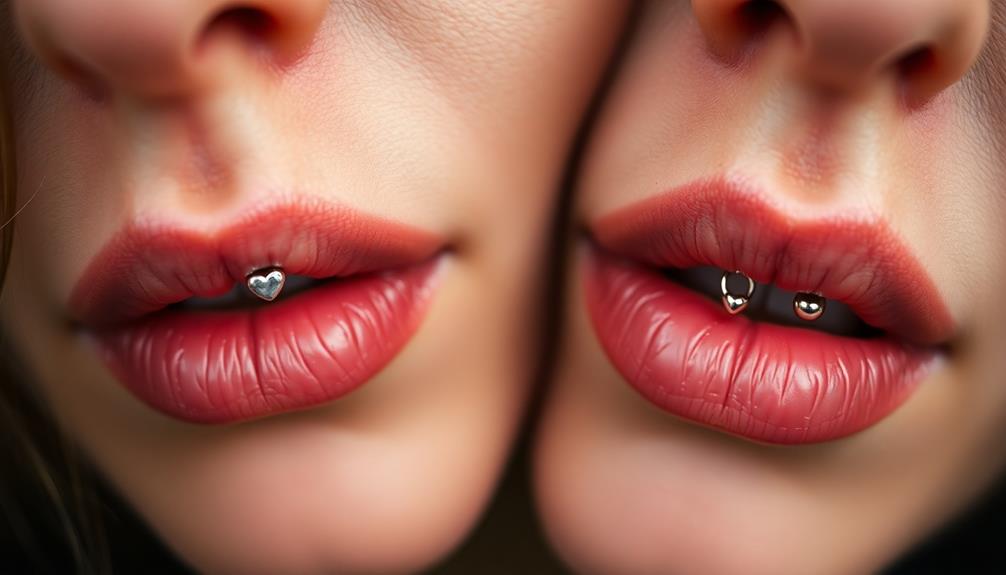
After considering the healing and aftercare differences between vertical and horizontal clitoral hood piercings, it's time to focus on how to choose the right one for you.
Start by reflecting on your anatomy consideration. A vertical clitoral hood piercing (VCH) requires sufficient loose tissue, while a horizontal clitoral hood piercing (HCH) relies on genital shape and is best placed at the top of the hood.
Consultation with an experienced piercer is essential. They can help assess your anatomy and guarantee proper placement, reducing the risk of complications.
Consider the healing process, too: VCH typically heals faster due to less movement, while HCH may require more care.
Think about your jewelry options as well. VCH often uses a curved barbell for comfort, whereas HCH frequently employs rings or circular barbells to minimize snagging.
Finally, weigh the sensation differences. VCH piercings directly stimulate the clitoris, enhancing pleasure, while HCH might offer less direct stimulation but can still be enjoyable.
Weigh the pros and cons of each piercing to make the best choice for your body and preferences.
Frequently Asked Questions
What Is the Difference Between Vertical and Horizontal Hood Piercings?
When you're considering hood piercings, the difference lies in their placement. Vertical piercings sit at the peak, allowing direct clitoral stimulation, while horizontal ones hang downward, providing varied sensations based on movement and jewelry type.
Does Vertical Clit Piercing Hurt?
Like a quick pinch from a bee, you might feel a sharp sensation during a vertical clit piercing. Most find it tolerable, but sensitivity varies; proper aftercare can ease discomfort as you heal.
Do Vertical Hood Piercings Close?
Yes, vertical hood piercings can close, especially if you remove the jewelry. The closure can happen quickly, often within days, but longer-worn piercings may take more time. Keeping jewelry in helps prevent closure.
Conclusion
In the grand tapestry of body art, choosing between vertical and horizontal clit hood piercings can feel monumental! Each option offers unique thrills, transforming your intimate experience into something extraordinary. Whether you crave the daring allure of vertical or the enchanting charm of horizontal, you're on the brink of a sensational journey. Remember, proper healing and aftercare are your trusty allies! So, immerse yourself and let your piercing reflect your personality like a glittering jewel in the night sky!

